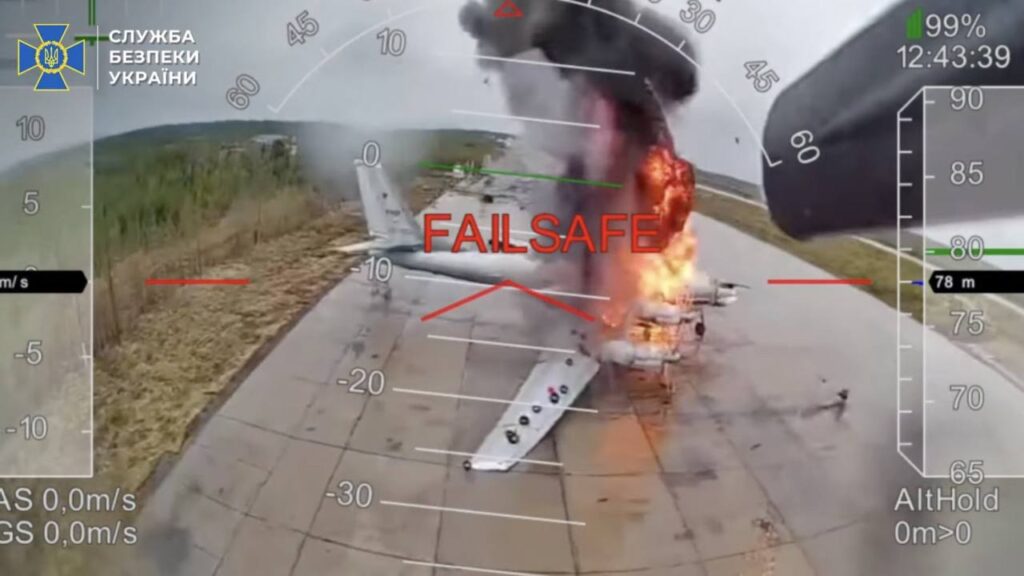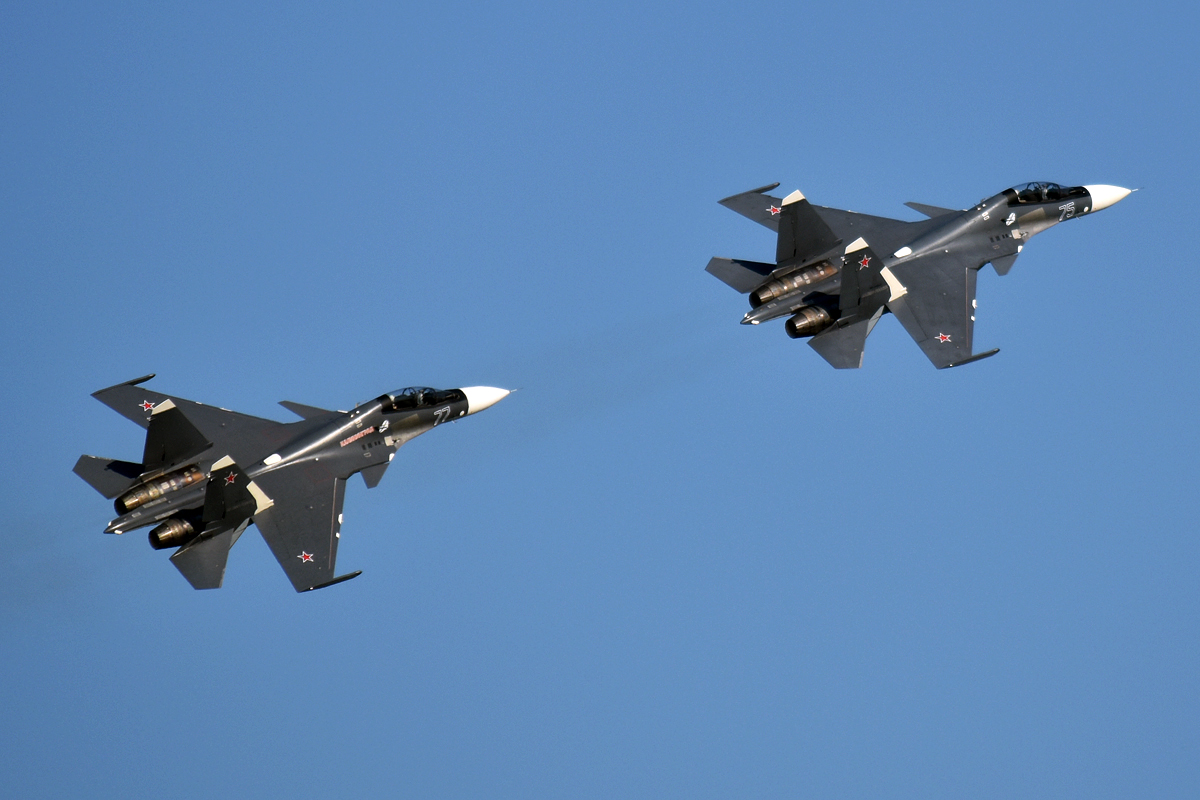On the night of 3 August, the SBU’s attack drones “visited” Saky airfield, 240 km from the front line in Russian-occupied Crimea, according to the SBU.
The explosive drones destroyed one Sukhoi Su-30 fighter jet and damaged another—and also damaged three Sukhoi Su-24 bombers, the SBU claimed. An aviation depot, potentially containing weapons or fuel, was also hit, according to the SBU.
“The successful special operation of the SBU in Saky is another step towards weakening the enemy's ability to wage a war of aggression against Ukraine,” the SBU announced. “The occupiers should remember that they will never feel safe on our land!”
What’s especially embarrassing to the Russians is that they’d just finished building at least 12 concrete bunker shelters at Saky to house the aircraft operating from the often-attacked base. “Inside these reinforced shelters, we’ve identified both jets and larger drones, including the Orion,” reported Tatarigami, the head of the Ukrainian Frontelligence Insight analysis group.
The shelters didn’t fully protect the planes at Saky, if the SBU’s claims are accurate.
The Saky raid brings to 27 the number of Russian aircraft Ukrainian drones have destroyed or damaged since 1 June. It’s not the worst month for the Russian air force since Russia widened its war on Ukraine 42 months ago, but it’s close. In all, Russian forces have lost 162 planes and 157 helicopters.
The SBU’s deep-strike campaign, mostly targeting Russia’s own deep-strike assets, dramatically widened this summer. Frustrated in their attempts to intercept Russian aircraft and their munitions in mid-air closer to their targets, Ukrainian forces are increasingly aiming “left of the boom,” to borrow the US Army’s phrasing—and hitting the aircraft and munitions on the ground, before they can launch.
On 1 June, the SBU smuggled long-haul trucks full of explosive first-person-view drones close to five Russian bomber bases.
Around 100 of the tiny FPVs, each weighing just a few pounds, swarmed the bases. Relaying signals back to their operators via Russia’s own cellular phone network, the drones homed in on bombers and other warplanes parked on the bases’ tarmacs.

Bomber massacre
In the immediate aftermath of the 1 June raid, the SBU claimed its drones had struck around 40 warplanes at Dyagilevo, Ivanovo, Olenya, Belaya and Ukrainka air bases.
But close scrutiny of satellite imagery seemed to confirm just 13 or 14 losses, including seven or eight Tupolev Tu-95 bombers, four Tupolev Tu-22M bombers, a Beriev A-50 radar plane and a transport plane. Alongside Tupolev Tu-160s, the Tu-22Ms and Tu-95s are Russia’s main platforms for long-range cruise missile strikes on Ukrainian cities.
By eliminating a portion of Russia’s missile-carriers, the 1 June Operation Spider Web could have “significant effect that should dramatically reduce Russia’s ability to launch missiles against Ukrainian cities and kill civilians,” noted Ben Hodges, a retired US Army general.
Trending Now
On the night of 27 June, the SBU’s long-range attack drones—potentially Ukroboronprom An-196s—“dealt another painful blow to the occupiers,” according to the service. The explosive drones struck the Russian airfield in Kirovske, 130 miles from the front line in southern Ukraine.
“Fire damage was inflicted on the locations of the aviation component, air-defense systems, ammunition storage depots, as well as reconnaissance and strike UAVs of the enemy,” the SBU reported.
The SBU claimed it destroyed Mil Mi-8 and Mi-26 transport helicopters and a Mil Mi-28 attack helicopter as well as a Pantsir air-defense vehicle. A reported secondary explosion may point to Russian ammunition stocks—or parked drones—cooking off.
“The SBU is systematically working to reduce the Russian Federation's capabilities to deliver air and bomb strikes on the territory of Ukraine,” the service explained. “The occupiers should realize that their expensive military equipment and ammunition are not protected anywhere: neither on the line of combat contact, nor in temporarily occupied territories, nor in the deep rear of the enemy.”
The very same night drones struck Kirovske, the SBU and Ukraine’s special operations command, the SSO, struck a second time—and damaged if not destroyed as many as five Russian air force Sukhoi Su-34 fighter-bombers at Marinovka air base in Volgorod Oblast, 290 km from the front line.
The 150 or so Su-34s that are left, after several dozen have been lost over Ukraine, are Russia’s primary platforms for dropping KAB winged glide-bombs on Ukrainian positions. The 500- and 1,000-kg KABs range as far as 64 km. They can be jammed, but the sheer number of KABs raining down on the Ukrainians—thousands per month—makes them among the most damaging munitions in the Russian arsenal.
The 27 June strikes capped a painful month for the Russian air force. The 3 August raid extended the costly summer into early August.


